Introduction: From Telecom Giant to Pocket Powerhouse
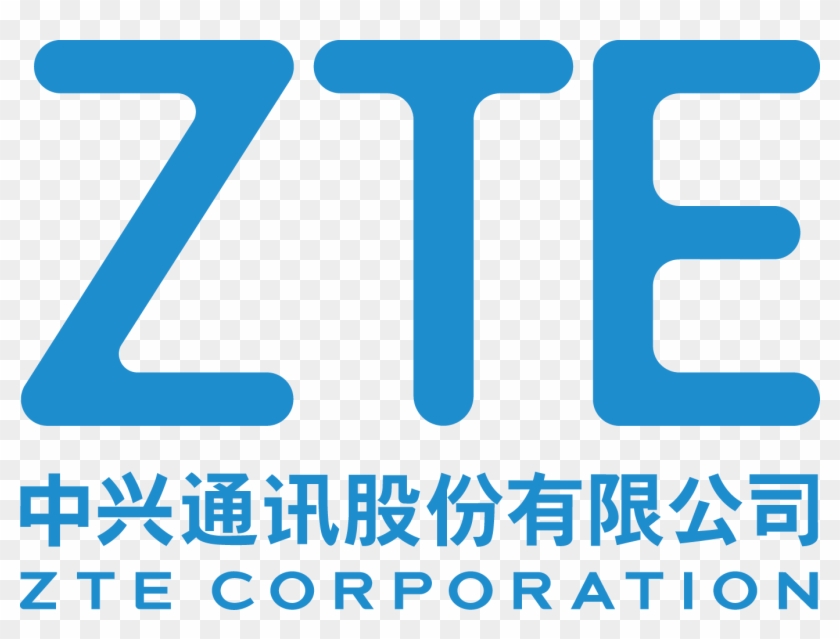
In the sprawling, hyper-competitive landscape of global technology, few companies present a more complex and compelling narrative than ZTE Corporation. To view ZTE merely as another smartphone manufacturer is to miss the forest for the trees. This is a story not of a single brand, but of a telecommunications titan, forged in the crucible of China’s technological ascent, that has weathered geopolitical storms and market upheavals to emerge with one of the most sophisticated and resilient multi-brand strategies in the industry. The central thesis of this report is that ZTE’s intricate mobile ecosystem is not a matter of simple market segmentation; it is a calculated and battle-hardened response to geopolitical pressures, critical supply chain vulnerabilities, and the relentless churn of the global smartphone market.
This deep dive will navigate the complete history and strategy of ZTE’s consumer mobile division, charting a course from its foundational roots to its modern, multi-pronged assault on the market. We will dissect the key players in this technological saga: the foundational parent, ZTE, a giant in the world of network infrastructure; the artistic and innovative Nubia, a brand conceived to blend technology with photographic artistry; and the ferocious, performance-obsessed Red Magic, a sub-brand built to dominate the demanding world of mobile gaming. The journey will reveal how these distinct entities, along with the workhorse Axon and Blade series, form a cohesive and formidable market presence, targeting every conceivable user from the budget-conscious student to the elite professional photographer and the competitive esports athlete.
The core argument to be explored is that ZTE’s consumer mobile division has become a masterclass in niche domination. This is a strategy born from the necessity of survival—a direct consequence of a near-fatal encounter with international sanctions—and subsequently honed into a powerful competitive advantage. By understanding the history of the parent company, the genesis of its specialized sub-brands, and the specific value proposition of each product line, we can uncover a powerful lesson in corporate resilience, strategic adaptation, and the art of finding overwhelming strength in specialization.
Chapter 1: The Foundation – The ZTE Corporation Story

To comprehend the intricate strategy behind Nubia’s camera-centric flagships or Red Magic’s thermal-engineered gaming beasts, one must first understand the colossal entity from which they sprang. ZTE Corporation’s journey began long before the first smartphone screen flickered to life, rooted in the fundamental building blocks of the digital world. Its history is one of ambition, global expansion, and a trial by fire that would ultimately reshape its destiny and force the very innovations this report will explore.
The Early Years (1985-2000s): From Semiconductor Dreams to a Global Telecom Player
ZTE Corporation was founded in 1985, not as a consumer brand, but as Zhongxing Semiconductor Co., Ltd., established by a group of investors with direct links to China’s Ministry of Aerospace. Headquartered in the burgeoning tech hub of Shenzhen, the company’s initial focus was far from the pockets of consumers; it was centered on producing basic telecommunications equipment, the essential hardware that underpins modern communication networks. In 1993, the company officially rebranded as ZTE, a name that would become synonymous with the global telecommunications infrastructure market.
Throughout these formative years, ZTE built its success not on flashy consumer electronics, but on the complex and demanding business-to-business (B2B) sector. The company specialized in the design, manufacture, and installation of carrier network systems, information solutions, and telecom equipment for a global clientele of carriers and corporations. Its portfolio spanned the entire spectrum of network technology, from core networks to wireline and wireless solutions. This deep-seated expertise in the foundational layers of technology—the very infrastructure that mobile phones would later rely on—provided ZTE with a profound engineering base and a global perspective that would prove invaluable in its later ventures. The company was, first and foremost, an architect of connectivity.
Going Global and Public: Building an Empire on Affordability
By the late 1990s, ZTE embarked on a strategic and aggressive international expansion. It methodically entered markets across Asia, Europe, and Africa, establishing its first international subsidiary in the Philippines in 1997. The core of this global strategy was a powerful and disruptive value proposition: providing affordable yet reliable telecommunications solutions. This reputation for value would become a recurring theme, echoing decades later in the pricing strategy of its Blade and Nubia Neo smartphone series.
This global push was fueled by a series of crucial financial milestones. After an initial public offering on the Shenzhen Stock Exchange in 1997, a second, more significant IPO on the Hong Kong Stock Exchange in December 2004 raised approximately $700 million USD. This massive influx of capital was immediately channeled into two key areas: further international expansion and a significant boost to research and development (R&D). This investment paid dividends, allowing ZTE to innovate in mobile communications and broadband services and solidify its market position. By 2006, the company was a global leader in the Code-Division Multiple Access (CDMA) equipment market, and by 2009, it had become the third-largest vendor of Global System for Mobile Communications (GSM) telecom equipment in the world. With sales offices in over 160 countries, ZTE had transformed from a state-linked domestic entity into a publicly traded, global telecommunications powerhouse.
A Company Under Fire: The Crucible of U.S. Sanctions
ZTE’s ascent was not without peril. In 2016, the company faced its most significant challenge to date: crippling sanctions from the United States government. The U.S. Department of Commerce accused ZTE of violating economic sanctions by illegally exporting U.S. technology to Iran and North Korea. The investigation revealed a deliberate and calculated effort by the company to circumvent these sanctions, even providing employees with instructions on how to do so. In March 2017, ZTE pleaded guilty to the charges and agreed to a massive penalty, including a fine of $1.19 billion USD—the largest-ever U.S. fine for export control violations—and a three-year probation period.
The plea deal came with a severe condition: a seven-year ban on purchasing U.S. technology would be activated if ZTE was caught violating the agreement. In April 2018, the Department of Commerce determined that ZTE had done just that. The company was found to have made false statements regarding its compliance, having failed to take meaningful disciplinary action against the executives involved in the original violations; some had even received bonuses. In response, the U.S. government activated the ban, prohibiting American companies from providing any exports to ZTE for seven years.
The impact was immediate and catastrophic. The technology ban “crippled ZTE’s mobile phone business”. The company’s consumer division was heavily reliant on U.S.-made components. The heart of most of its mobile phones was a chipset made by the American company Qualcomm. Without access to these critical microprocessors, as well as other essential components and software, ZTE’s smartphone production lines ground to a halt. The sanctions were not just a financial penalty; they were a near-fatal blow that severed a critical artery in ZTE’s supply chain, exposing a profound strategic vulnerability and threatening the very existence of its consumer business. This near-death experience would become the single most important catalyst for a fundamental rethinking of ZTE’s entire mobile strategy, forcing it to adapt, diversify, and specialize in order to survive. The company that emerged from this crucible would be forever changed, its future product lines shaped by the hard-learned lessons of 2018.
Chapter 2: The Artisan – The Birth and Evolution of Nubia

In the years preceding the geopolitical firestorm, ZTE had already begun to diversify its consumer-facing identity. Recognizing the need for a brand that could compete on more than just price, the company cultivated a new entity focused on innovation, design, and a particular mastery of mobile photography. This brand was Nubia, an artisan subsidiary that would eventually chart its own course, pushing the boundaries of what a smartphone camera could be and laying the groundwork for ZTE’s future niche-focused strategy.
“Be Yourself” – A New Brand for a New Era
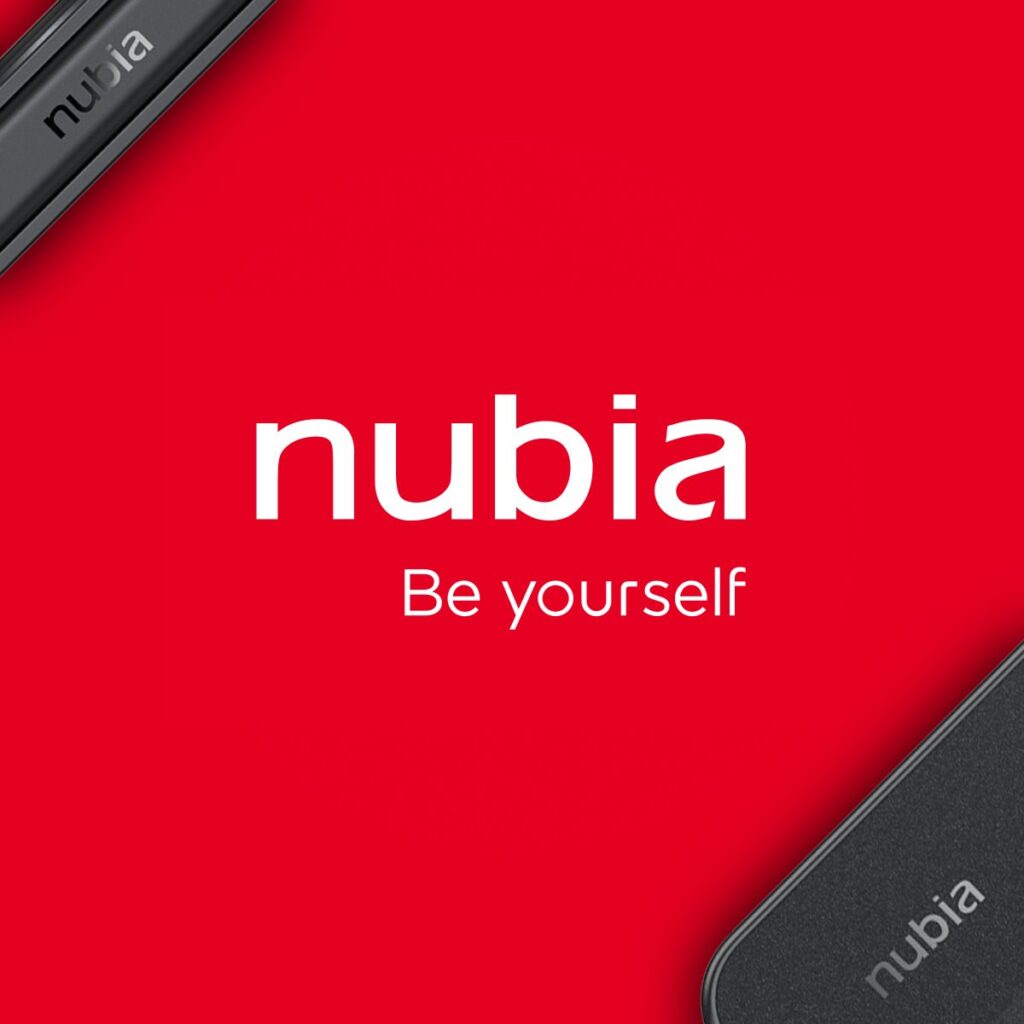
Nubia Technology was officially founded in October 2012 as a wholly-owned subsidiary of ZTE. From its inception, Nubia was designed to be distinct from its parent company. Its brand philosophy, encapsulated in the slogan “Be Yourself,” was aimed at bringing high-end, innovative smartphones to “adventurous users who want to pursue new experiences and an enhanced quality of life”. The name itself was chosen with artistic intent; “Nubia,” derived from ancient civilizations, means “clouds” in Latin, a term selected to evoke a sense of beauty and kindness. This was a clear signal that the brand’s ambition was to create devices that were not just technologically proficient, but also aesthetically pleasing and creatively empowering.
This new brand was ZTE’s strategic entry into the premium smartphone segment, a move to challenge the established players with devices that offered unique features and a strong design identity. While ZTE’s own branded phones often competed on value and carrier partnerships, Nubia was positioned to compete on innovation, particularly in two key areas: interactive technology and professional-grade mobile photography. Early on, Nubia introduced novel concepts like the world’s first bezel-less design, Frame interactive Technology (FiT), and a Three-in-One (TiO) fingerprint recognition feature, signaling its commitment to pushing the technological envelope.
The Path to Independence and a New Identity

To truly cultivate its own identity and gain traction in the fiercely competitive smartphone market, Nubia needed autonomy. The first major step in this direction came in June 2015, when it was spun off to become an independent company, no longer operating as a direct subsidiary of ZTE. This independence was further solidified in 2016 when the company received a significant investment from Suning Holdings Group and Suning Commerce Group, major players in Chinese retail.
The final piece of this structural evolution occurred in 2017, when ZTE officially reduced its stake in Nubia to 49.9%. This seemingly small percentage change had a profound legal and operational meaning: Nubia was no longer considered a subsidiary of ZTE, but rather an “associate company”. This arm’s-length relationship granted Nubia the freedom to forge its own path, pursue its own marketing strategies—such as sponsoring football clubs and hiring Cristiano Ronaldo as a brand ambassador—and develop a product portfolio that was distinct from ZTE’s mainline offerings. While still deeply connected to ZTE’s manufacturing and R&D prowess, Nubia could now operate with the agility of a focused, independent brand.
The Camera as a Canvas: The Nubia Z Series Legacy
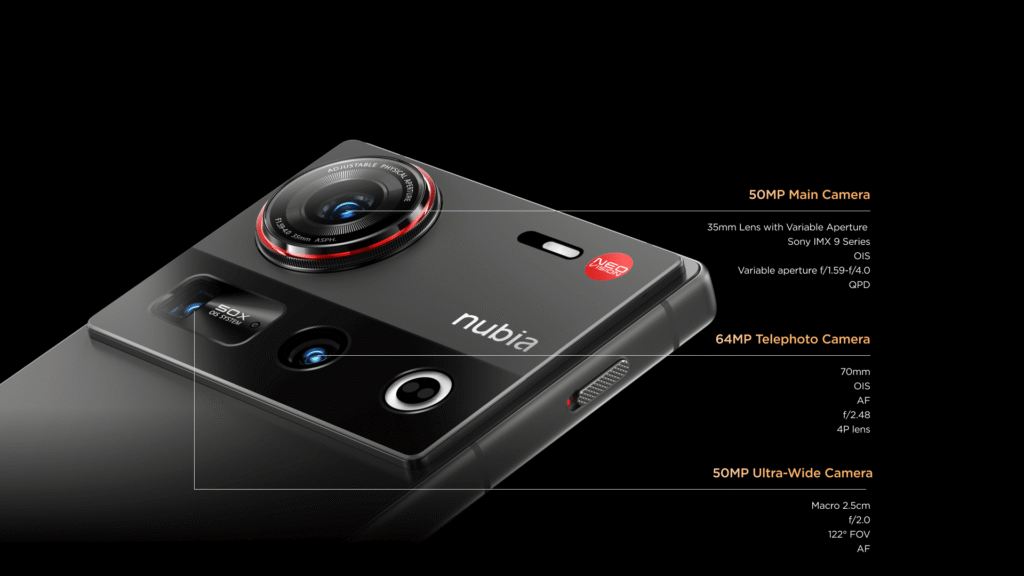
The ultimate expression of Nubia’s brand identity has always been its flagship Z series. From its earliest iterations, the Z series was established as the brand’s playground for photographic innovation, specializing in bringing highly advanced, DSLR-like camera functions to a smartphone. This relentless focus on camera hardware has created a legacy of devices that appeal to a specific niche of photography enthusiasts and prosumers who value optical quality and manual control over the point-and-shoot simplicity of mainstream flagships.
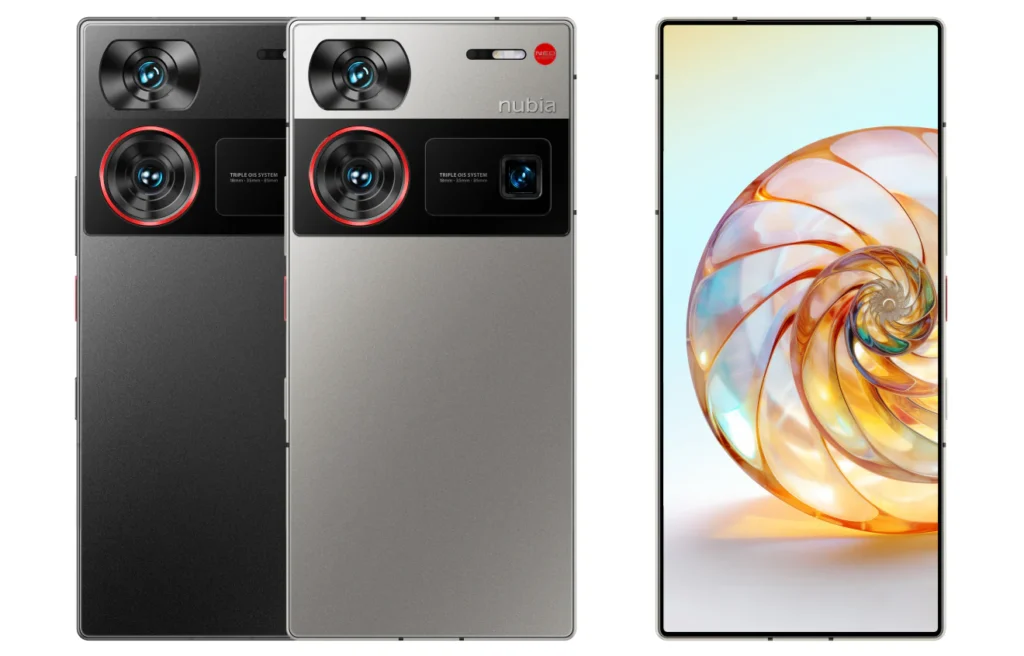
The technological evolution of the Z series camera is a testament to this hardware-first philosophy. Nubia has consistently been at the forefront of introducing novel and powerful camera technologies. One of its most visually striking innovations is its pioneering work in Under-Display Camera (UDC) technology. Beginning with earlier models and refined through multiple generations, this technology allows the selfie camera to be placed beneath the screen, eliminating the need for notches or punch-holes and achieving a true, uninterrupted full-screen aesthetic—a holy grail of modern smartphone design.
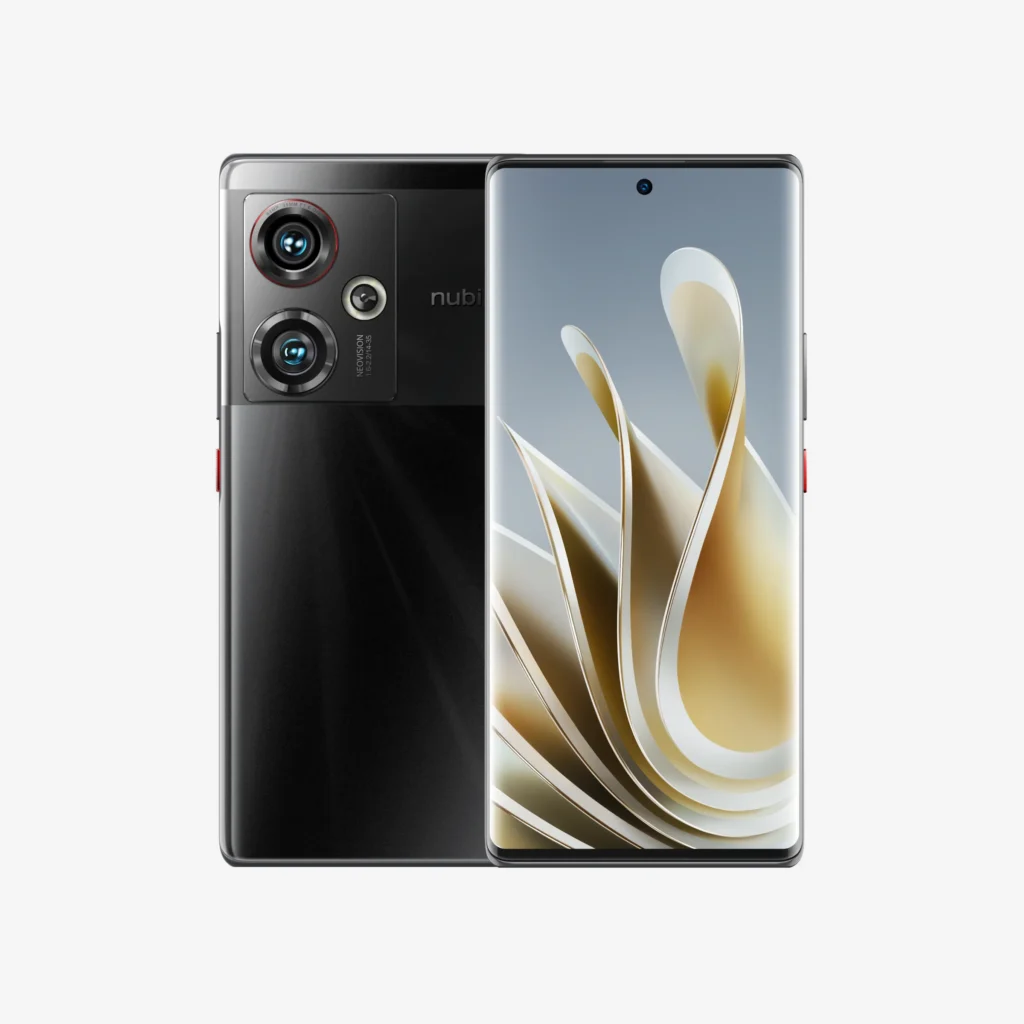
Beyond the UDC, the Z series is defined by its unique approach to optics. A signature feature of recent flagships like the Z60 Ultra and Z70 Ultra is the use of a custom 35mm primary lens. This focal length is a deliberate departure from the 24mm or 28mm wide-angle lenses found on virtually every other smartphone. A 35mm lens provides a more natural, less distorted field of view that is highly favored by street, documentary, and environmental portrait photographers, signaling that the Z series is a tool designed with a specific creative vision in mind.
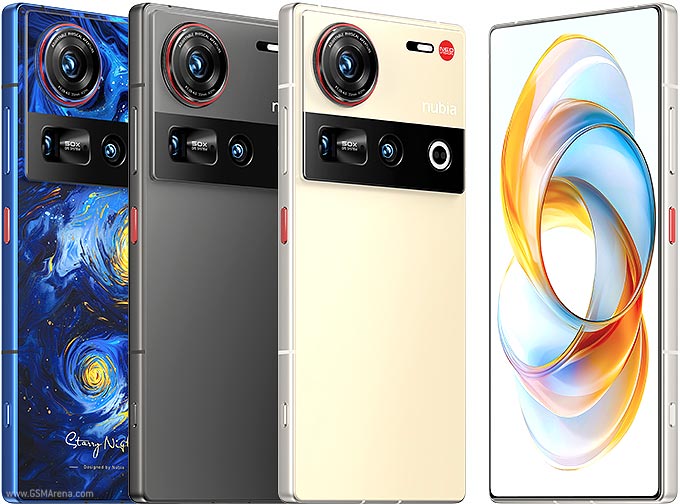
This unique optical choice is backed by an unwavering commitment to using the best available sensor hardware. The Nubia Z70S Ultra, for example, incorporates a massive 1-inch custom Sony IMX989 sensor for its main camera. The physical size of this sensor allows for individual pixels that are an astonishing 1.6μm, enabling it to capture significantly more light than smaller sensors. This translates directly to superior low-light performance, producing images with less noise and more detail in challenging conditions, akin to equipping the phone with “night vision”.
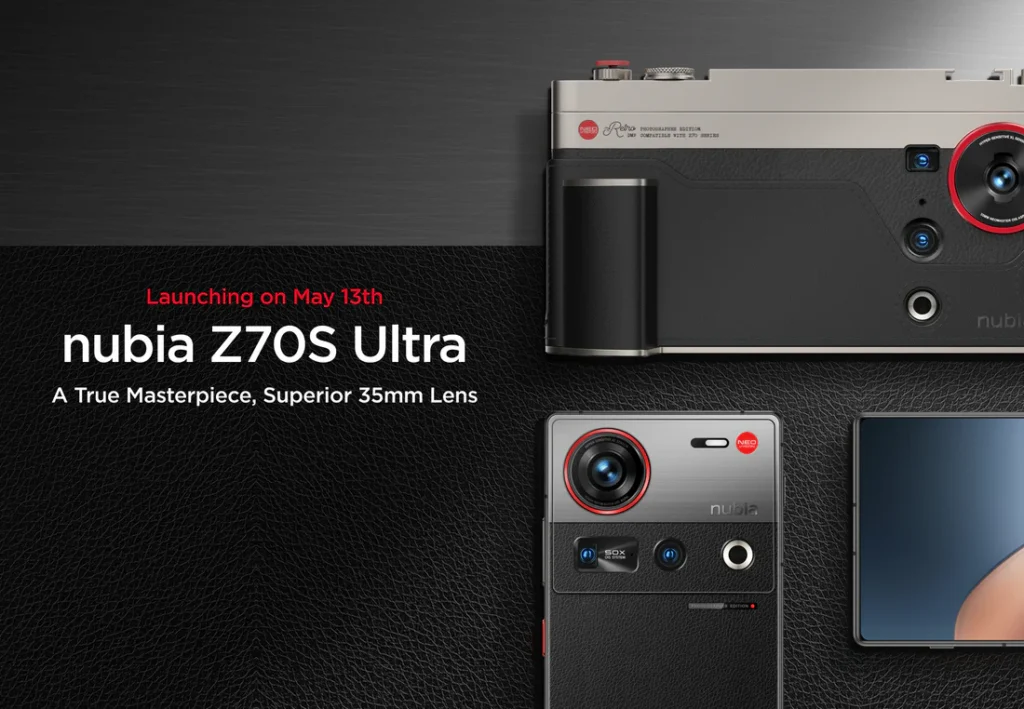
The hardware ambition doesn’t stop there. The Z series brings features typically reserved for dedicated cameras into the smartphone form factor. Recent models have introduced a variable physical aperture, allowing users to adjust the lens opening between f/1.59 and f/4.0 in Pro mode. This gives photographers unprecedented control over depth of field, a creative tool that even other top-tier camera phones with “variable” apertures (which usually only offer two settings) cannot match. This is complemented by other professional-grade features like floating lens groups in the telephoto lens for sharper close-up portraits and the inclusion of a physical, two-stage shutter button that mimics the feel of a traditional camera—a light press to focus, a full press to capture.
This powerful hardware is augmented by an increasingly sophisticated AI Imaging Brain. Nubia’s software leverages the neural processing capabilities of modern Snapdragon chipsets to automate complex photographic tasks. Features like “Dynamic Tracking 3.0” use skeleton tracking algorithms to maintain sharp focus on fast-moving subjects like pets or children, while the “Light & Shadow Master” AI analyzes a scene and automatically applies appropriate toning strategies to enhance color or contrast.
However, this relentless focus on hardware engineering has consistently come with a significant trade-off: software polish. While the Z series is lauded by technical reviewers for its hardware prowess and unique photographic output, it is just as consistently critiqued for its software experience. Common complaints include a user interface that can be slow or buggy, poor translations in the English-language software, an unintuitive and sometimes confusing camera app, and a short software update schedule compared to mainstream competitors.
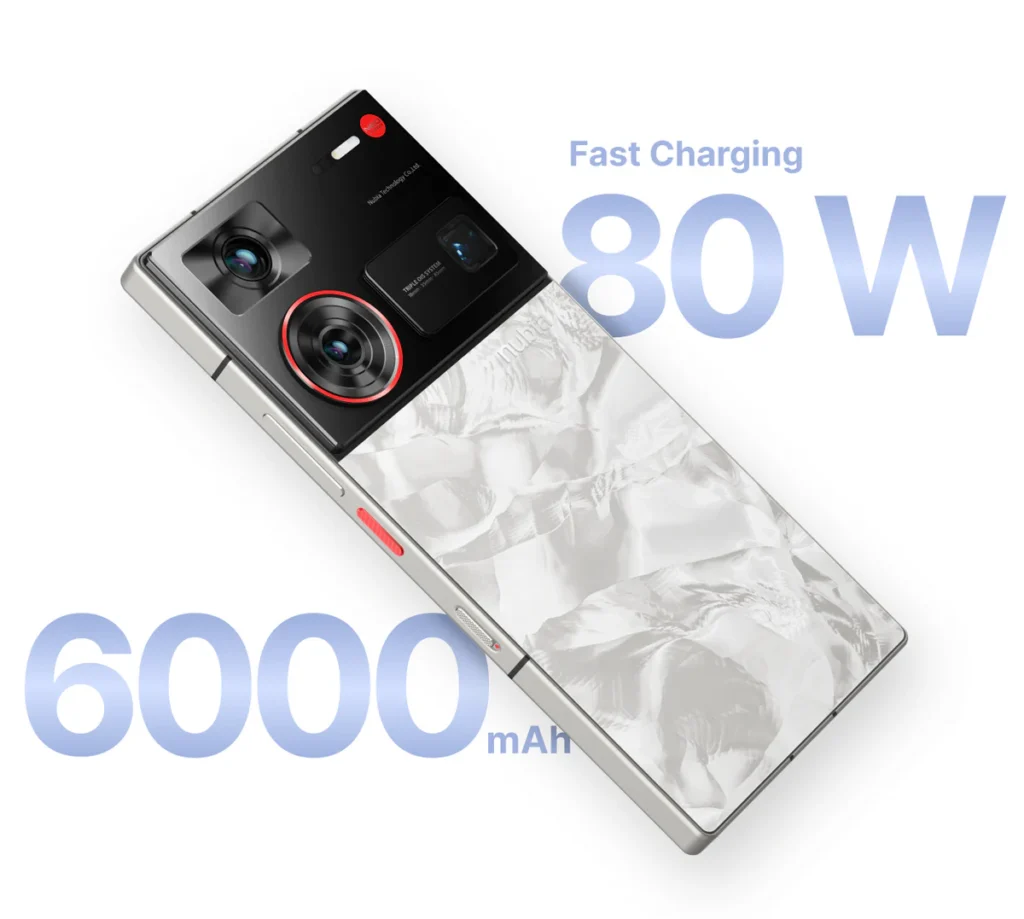
This persistent hardware-software disconnect reveals a core aspect of Nubia’s corporate philosophy. The company clearly prioritizes groundbreaking hardware engineering over the development of a seamlessly integrated and polished software experience. Resources appear to be heavily skewed toward R&D in optics, sensors, and physical design, while software development, localization, and long-term support are comparatively under-resourced. The result is a product that is less of a mainstream consumer device and more of a “prosumer’s tool.” It appeals directly to a niche of photography enthusiasts who are knowledgeable enough to extract the full potential from the exceptional hardware and willing to tolerate software quirks to do so. This explains why the Z series is highly respected in technical circles for its ambition and capability, yet has failed to achieve the mass-market appeal of an iPhone or a Samsung Galaxy, where the seamless and intuitive fusion of hardware and software is paramount to the user experience.
| Model | Year | Main Sensor | Key Feature 1 | Key Feature 2 | Key Feature 3 |
| Nubia Z20 | 2019 | 48 MP Sony IMX586 | Dual AMOLED Displays | Triple Camera System | Side-mounted Fingerprint Sensors |
| Nubia Z50 | 2022 | 64 MP Sony IMX787 | Custom 35mm Optical Lens | Snapdragon 8 Gen 2 | 144Hz AMOLED Display |
| Nubia Z60 Ultra | 2023 | 50 MP Sony IMX800 | Under-Display Camera (UDC) | 35mm Main, 18mm UW, 85mm Tele | IP68 Water/Dust Resistance |
| Nubia Z70S Ultra | 2025 | 50 MP 1-inch Sony IMX989 | Variable Physical Aperture (f/1.6-f/4.0) | Custom 35mm Optical Lens | 6600mAh Silicon-Carbon Battery |
Chapter 3: The Warrior – Forging the Red Magic Gaming Empire
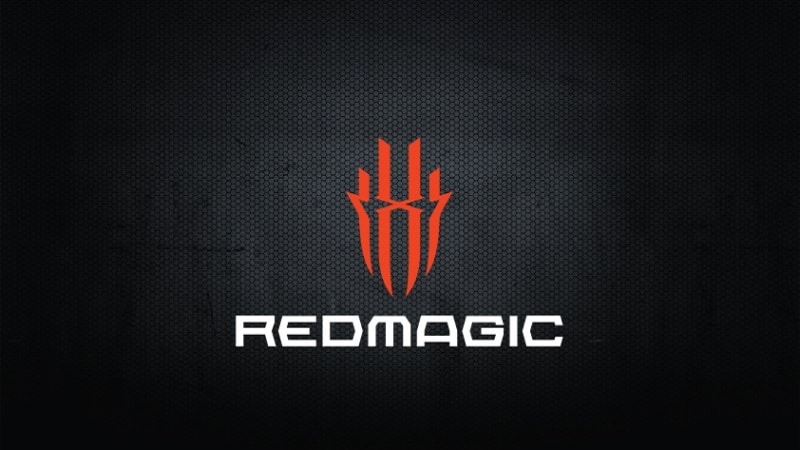
While Nubia pursued the path of the artisan, it also recognized a new and explosive force in the mobile world: competitive gaming. The rise of esports and graphically intensive mobile titles created a demand for devices that prioritized raw power, thermal management, and gamer-centric features above all else. To answer this call, Nubia forged a new warrior sub-brand, Red Magic, an entity dedicated to a single, uncompromising purpose: to build the ultimate mobile gaming machine.
Answering the Gamer’s Call: The Genesis of Red Magic
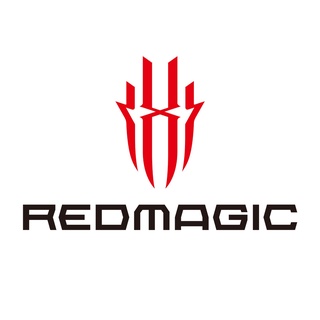
The Red Magic sub-brand was officially launched by Nubia in April 2018. Its creation was a direct and strategic move to capture the burgeoning gaming smartphone market, a segment that was, at the time, largely underserved by mainstream manufacturers. The prevailing design philosophy was clear from the outset: to create a device that was not simply a flagship phone with a “gaming mode,” but a purpose-built tool for gamers. This meant focusing on an ergonomic design comfortable for long sessions, delivering the highest possible performance, and cultivating a distinct gamer aesthetic, complete with the now-iconic RGB lighting, that stood apart from the minimalist designs of Apple and Samsung. The first Red Magic phone set the tone, with an aggressive, angular design and a focus on features that mattered most to its target audience.
The Cooling Revolution: A Legacy of ICE
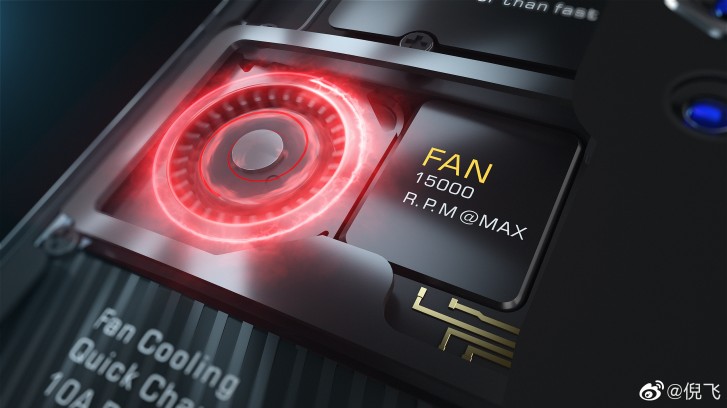
From its very first device, Red Magic identified the single greatest enemy of mobile gaming performance: heat. A processor that gets too hot will throttle its performance to protect itself, leading to stuttering, frame drops, and a compromised gaming experience. Consequently, the brand’s most significant and enduring innovation has been its relentless pursuit of superior thermal management. This focus on cooling has become Red Magic’s key differentiator and the foundation of its performance claims.
The journey began with a clever fanless approach. The original Red Magic phone incorporated multiple passive cooling technologies to dissipate heat effectively without the complexity of moving parts. This included extra layers of heat-spreading graphite, a convex-shaped back to increase the surface area for faster heat radiation, and four dedicated cooling ports to improve airflow. This initial system was already effective, allowing the phone to run significantly cooler than its mainstream competitors.
However, the true revolution came when Red Magic broke from convention and became the first smartphone brand in the world to integrate a physical, active cooling fan directly inside the phone’s chassis. This was a radical step that transformed the thermal capabilities of the device. The evolution of this built-in turbofan is a core part of the Red Magic story, with its speed and efficiency increasing with each generation. The fan in the Red Magic 6 series, for example, spun at up to 18,500 RPM, while later models like the Red Magic 10 Pro pushed this to an incredible 23,000-24,000 RPM, moving a significant volume of air through the device’s internal heat sinks.
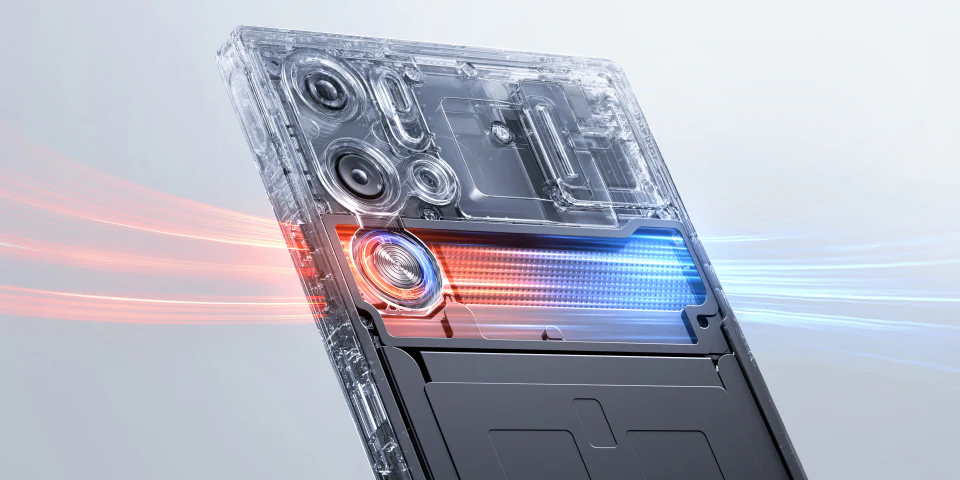
This fan is the centerpiece of a sophisticated, multi-layered cooling system that Red Magic dubs “ICE.” Modern iterations, such as the ICE-X and ICE 13 systems, are marvels of thermal engineering. They combine the high-speed fan with a massive vapor chamber, advanced thermal materials like liquid metal and aerospace-grade graphene, and multiple layers of heat-dissipating components. This hybrid active-passive system is incredibly effective, capable of lowering the device’s core temperature by as much as 18°C and, most importantly, preventing the processor from thermal throttling even under the most extreme, prolonged gaming loads.
Recognizing that some gamers demand even more, Red Magic has also built an ecosystem of external cooling accessories. Products like the REDMAGIC Cooler 6 Pro utilize third-generation semiconductor (thermoelectric) cooling and a powerful magnetic attachment system to provide an additional layer of extreme cooling. This comprehensive, multi-faceted approach to thermal management has cemented Red Magic’s reputation as the industry leader in keeping gaming phones cool under pressure.
Performance Unchained: The Benchmark King
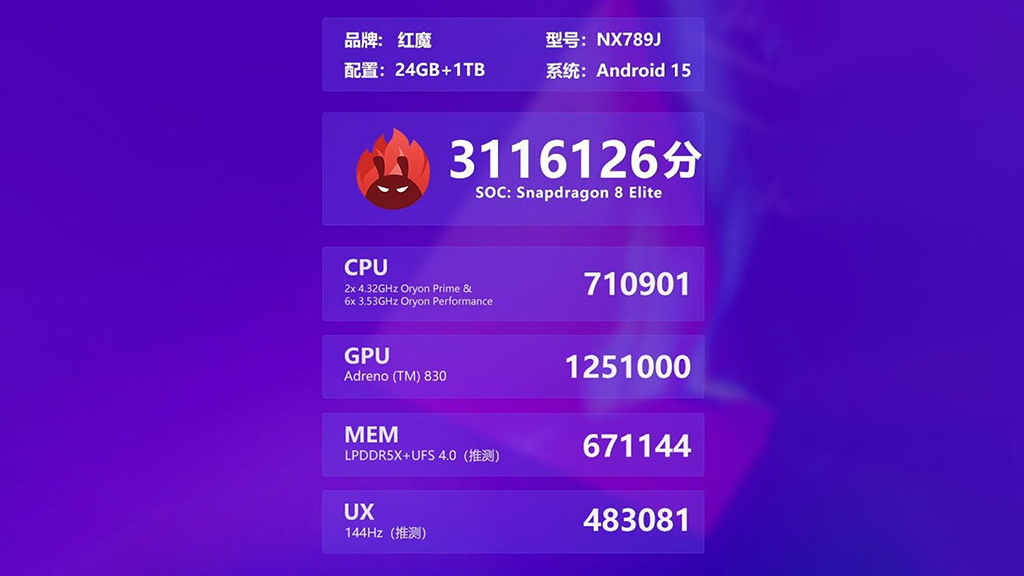
The purpose of this revolutionary cooling system is to unleash the full, unthrottled potential of the most powerful mobile hardware available. Red Magic’s strategy has always been to pair its cooling prowess with a relentless pursuit of raw performance. Each new flagship is equipped with the latest and most powerful processor from Qualcomm, from the Snapdragon 8 series to the cutting-edge Snapdragon 8 Elite, and is often packed with an enormous amount of LPDDR5X RAM—up to 24GB in some configurations—and the fastest UFS 4.0 storage.
This combination of top-tier silicon and superior cooling consistently places Red Magic phones at the top of performance benchmarks. In synthetic tests like 3DMark, which measure graphics performance, Red Magic devices frequently outperform all competitors, including their primary rival, the Asus ROG Phone. For example, in a head-to-head comparison, the Red Magic 10 Pro beat the ROG Phone 9 by an average of 18% across three key 3DMark tests. While the ROG Phone sometimes edges out Red Magic in CPU-focused benchmarks like Geekbench or overall system tests, Red Magic’s dominance in raw GPU scores is a direct result of its thermal headroom, which allows the graphics processor to run at higher clock speeds for longer.
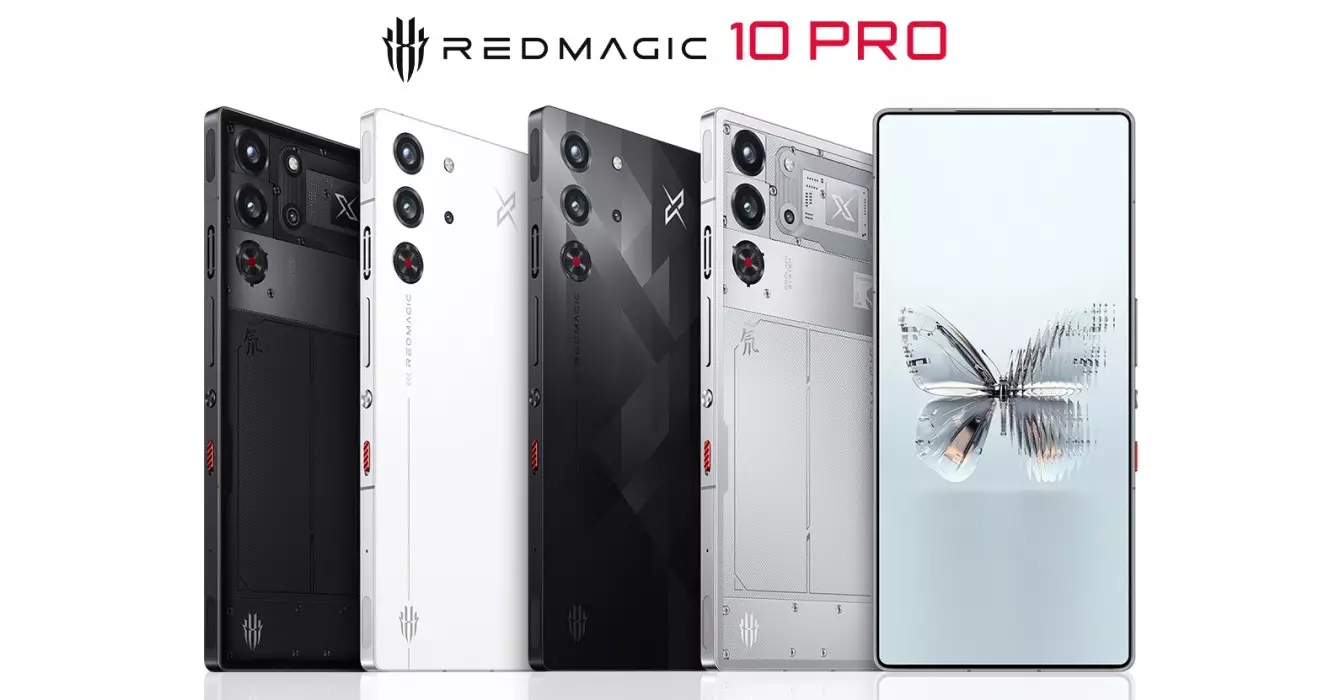
However, the true measure of a gaming phone is not its peak benchmark score, but its sustained performance. This is where the cooling system’s value becomes most apparent. In grueling stress tests, which run a demanding benchmark repeatedly over a long period, Red Magic phones demonstrate remarkable consistency. For example, the Red Magic 10 Pro was able to complete the 3DMark Steel Nomad Light stress test with 99.3% stability, meaning its performance barely dropped from the first run to the last. This is the key selling point for competitive gamers: the phone will deliver the same smooth, high-frame-rate experience in the final minutes of a long match as it did in the first, a feat that many mainstream flagships, with their passive cooling, simply cannot match.
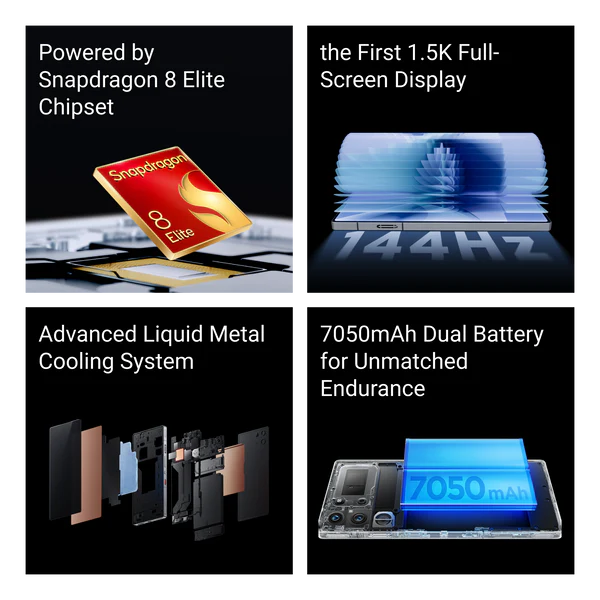
| Feature | Red Magic 10S Pro | Asus ROG Phone 9 Pro |
| Processor | Snapdragon 8 Elite (Overclocked) | Snapdragon 8 Elite |
| RAM/Storage | Up to 24GB LPDDR5T / 1TB UFS 4.1 Pro | Up to 24GB LPDDR5X / 1TB UFS 4.0 |
| Display | 6.85″ AMOLED, 144Hz, 2000 nits | 6.78″ LTPO AMOLED, 165Hz, 2500 nits |
| Battery/Charging | 7050mAh / 100W Wired | 5800mAh / 65W Wired, 15W Wireless |
| Cooling System | ICE 13: 24,000 RPM Fan + 12,000mm² VC | AeroActive Cooler X + Advanced Passive System |
| Special Features | Built-in Shoulder Triggers, RGB Fan Lights | AirTriggers, External Fan Accessory, IP68 Rating |
| 3DMark (Wildlife Ext.) | ~7015 | ~5945 |
| Geekbench 6 (Multi) | ~9830 | ~9950 |
| Price (Approx.) | Starting at $699 | Starting at $999 |
More Than a Phone: The Red Magic Ecosystem
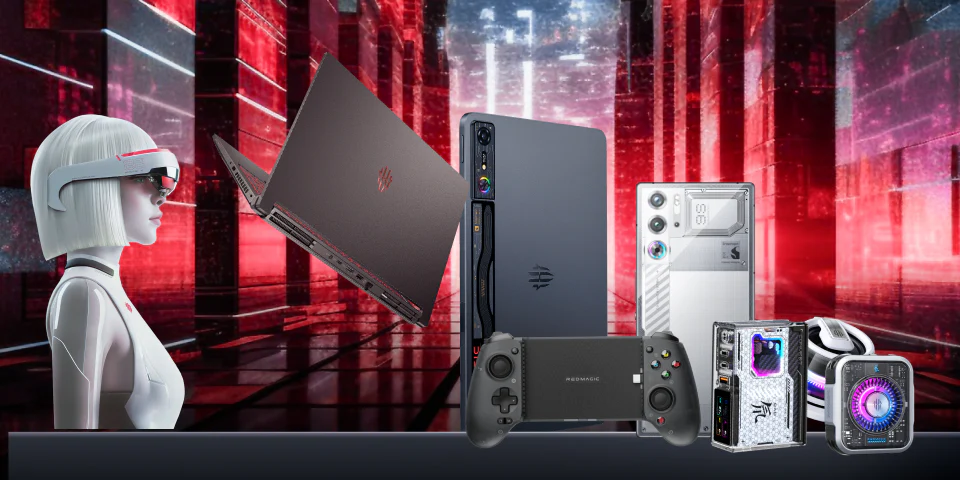
Red Magic understands that a world-class gaming experience is about more than just internal hardware. It requires a holistic ecosystem of software and hardware controls that empower the player. The heart of the software experience is the dedicated Game Space, a special launcher activated by a physical switch on the phone. This mode transforms the device into a gaming console, optimizing system resources, blocking distracting notifications (a feature originally called GameBoost Mode), and providing a hub for accessing a suite of powerful gaming-specific tools and settings.
Crucially, Red Magic phones integrate hardware controls that provide a tangible competitive advantage. Built-in capacitive shoulder triggers are a standard feature, offering a 520Hz touch sampling rate for near-instantaneous input. These triggers can be mapped to any on-screen action, allowing players to aim, shoot, or activate abilities without their thumbs ever leaving the joysticks, mimicking the control scheme of a professional gamepad.

This focus on a complete gaming solution has driven Red Magic to expand beyond smartphones into a comprehensive gaming brand. The company now offers a wide range of accessories, including external gamepads like the Shadow Blade, high-performance cooling attachments, and gaming earphones. More recently, Red Magic has made a significant leap into the broader PC gaming market with the launch of its first gaming laptop, the Titan 16 Pro, and a line of dedicated gaming tablets like the Astra and Nova. This expansion signals a clear ambition to become a dominant name not just in mobile gaming, but in the entire gaming hardware ecosystem.
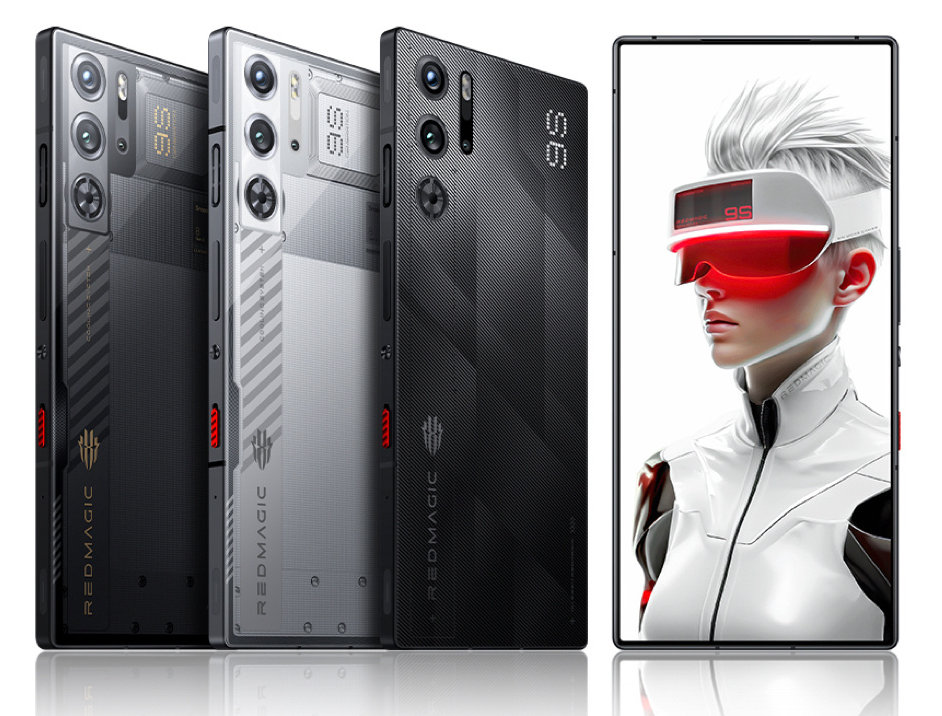
This entire strategy is built upon a philosophy of uncompromising specialization. The success of Red Magic stems from a laser-focused dedication to maximizing gaming performance and thermal management above all else, even if it means making sacrifices in areas that are priorities for mainstream phones. This is not an oversight; it is a deliberate and calculated strategic choice. Resources that other brands might pour into camera R&D or licensing premium features like wireless charging are instead allocated to developing a faster fan, a larger vapor chamber, or fine-tuning the processor for higher sustained clock speeds.
This creates an incredibly clear and compelling value proposition for its target audience: hardcore mobile gamers who prioritize frame rates over photo quality and sustained power over mainstream conveniences. This focus allows Red Magic to aggressively price its devices, often undercutting the more “all-rounder” Asus ROG Phone while matching or exceeding it in the single metric that matters most to its core user base: pure, unthrottled, in-game performance. Red Magic has succeeded not by trying to build the best
phone, but by dedicating itself to building the best gaming engine for the price.
Chapter 4: The Contender – Democratizing Gaming with the Nubia Neo Series
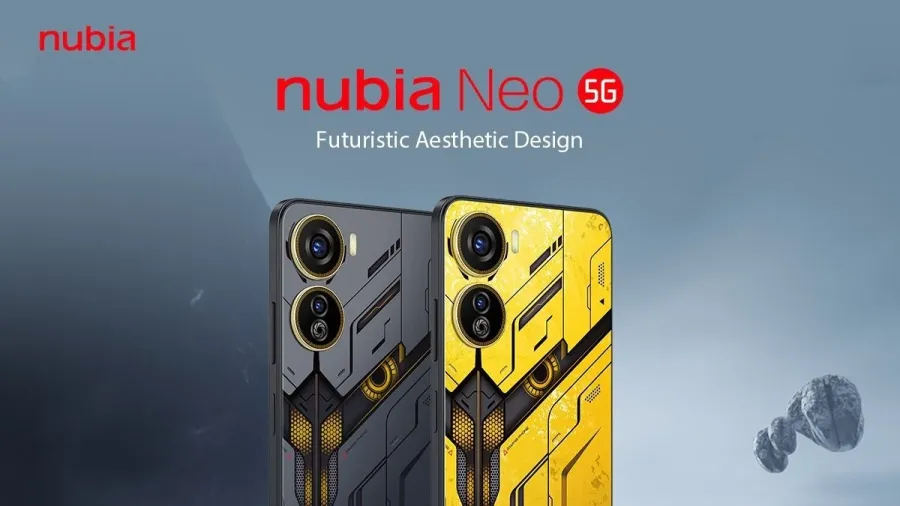
While Red Magic was busy conquering the peak of the gaming performance mountain, ZTE and Nubia identified a vast and fertile valley below: a growing army of mobile gamers who coveted the aesthetics and features of a dedicated gaming phone but were locked out by the premium price tags of flagship models. To capture this underserved market, the company launched a new contender, the Nubia Neo series, a line of smartphones designed to democratize the gaming experience by making it accessible and affordable for everyone.
A New Frontier: The Rise of the Budget Gaming Phone
The mobile gaming market is not monolithic. For every enthusiast willing to spend over $700 on a top-tier Red Magic or ROG Phone, there are dozens of younger, more budget-conscious players who are equally passionate about their favorite games. These users, particularly in emerging markets, desire the same experience—high refresh rate screens, responsive controls, and a distinct gamer aesthetic—but at a fraction of the cost. ZTE astutely recognized this gap in the market. Mainstream budget phones offered the necessary performance to run popular games, but they lacked the specialized features and design identity that make a phone feel like a true gaming device.
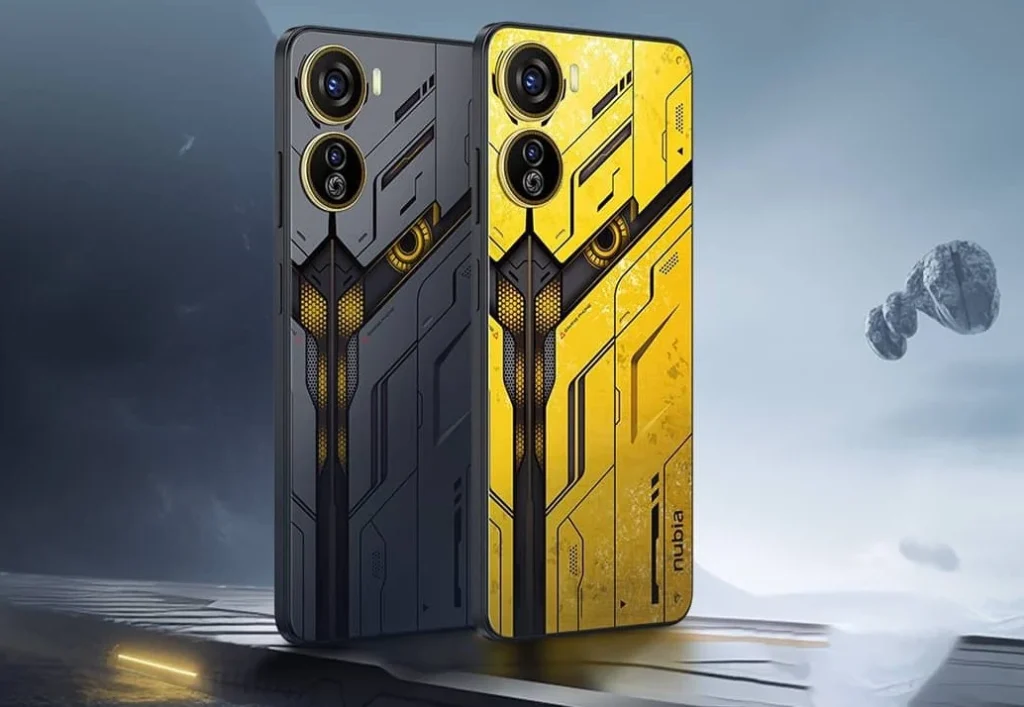
The launch of the first Nubia Neo 5G in 2023 was a direct and strategic move to conquer this “lower mid-range” gaming frontier. The goal was not to compete with its own Red Magic flagships on raw power, but to offer a compelling and affordable alternative that delivered the core essence of the gaming phone experience. It was a calculated play to bring a taste of the elite to the masses.
The Neo Formula: Cascading Features for High Perceived Value
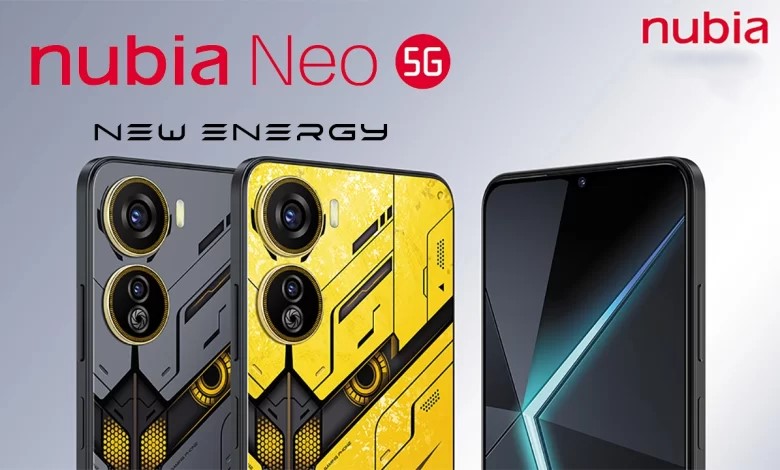
The core strategy behind the Nubia Neo series is a brilliant example of leveraging existing intellectual property to create a product with high perceived value. The formula is simple yet effective: take the most desirable design cues and software features from the premium Red Magic line and “cascade” them down to a more affordable hardware platform.
This “features cascade” is evident across the entire Neo line. The devices inherit the futuristic, aggressive “Mecha” design language of their Red Magic cousins, complete with bold lines and even customizable RGB lighting accents on some models. More importantly, they bring critical gaming hardware to the budget segment, most notably the inclusion of dual gaming
shoulder triggers—a feature almost unheard of at this price point that provides a genuine gameplay advantage.
The cascade continues on the software side. The Neo series comes equipped with the powerful Game Space software, the very same gaming hub found on Red Magic phones. This gives users access to a suite of performance optimization tools, notification blocking, and customizable settings for the shoulder triggers. Essential gaming-centric features like
bypass charging, which powers the phone directly from the charger during gameplay to reduce heat buildup and preserve battery health, are also included. By packaging these premium features into an affordable device, Nubia creates a product that feels far more special and capable than a typical budget phone.
Of course, to achieve this aggressive price point, a compromise must be made, and it comes in the form of the processor. Instead of using Qualcomm’s expensive flagship or even mid-range Snapdragon chips, the Neo series is built around more cost-effective System-on-a-Chip (SoC) solutions from Unisoc, such as the T820, T8300, and T9100. While these chips cannot match the raw power of a Snapdragon 8 Elite, they provide more than enough performance for the most popular mobile games at medium to high settings, striking a crucial balance between capability and cost. This deliberate chipset choice is the key that unlocks the Neo’s disruptive price point.

The evolution of the Neo series demonstrates a clear focus on refining this formula. While the raw chipset performance has remained relatively stable across generations—with analysis showing that the Unisoc T9100 in the Neo 3 GT is essentially a repackaged version of the T820 found in the Neo 2—the focus has been on improving other aspects of the user experience. Upgrades have included moving from IPS LCD to higher-quality AMOLED displays, increasing battery size and charging speeds, and adding features like under-display fingerprint sensors. This iterative approach suggests the strategy is not about chasing benchmark scores, but about perfecting the balance of features, performance, and price to create the most compelling budget gaming package possible.

| Model | Year | Chipset | AnTuTu Score (Approx.) | Display (Size/Type/Hz) | Battery/Charging | Key Feature Upgrade |
| Nubia Neo 5G | 2023 | Unisoc T820 | ~536,000 | 6.6″ IPS LCD, 120Hz | 4500mAh / 22.5W | Introduction of the budget gaming concept |
| Nubia Neo 2 5G | 2024 | Unisoc T820 | ~536,000 | 6.72″ IPS LCD, 120Hz | 6000mAh / 33W | Added Shoulder Triggers, Larger Battery |
| Nubia Neo 3 5G | 2025 | Unisoc T8300 | ~510,000 | 6.8″ AMOLED, 120Hz | 6000mAh / 33W | Upgrade to AMOLED Display |
| Nubia Neo 3 GT | 2025 | Unisoc T9100 (T820) | ~536,000 | 6.8″ AMOLED, 120Hz | 5000-6000mAh / 80W | Faster Charging, More RAM |
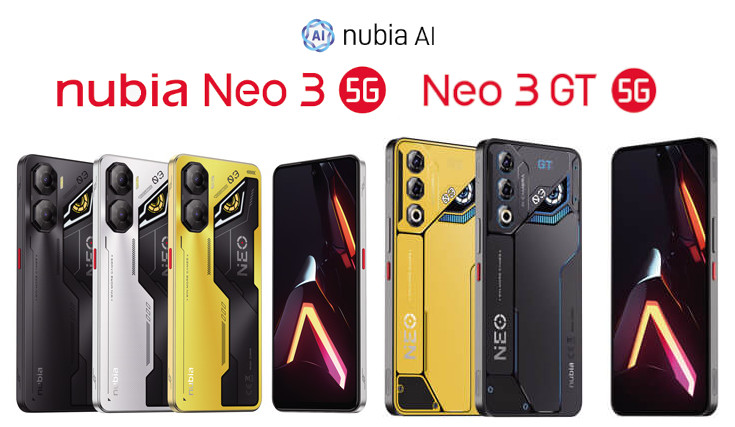
Case Study: Why the Nubia Neo 2 5G is a Banger for the Price
The Nubia Neo 2 5G, released in the second quarter of 2024, perfectly encapsulates the success of the Neo formula and directly addresses the user’s query about its value. It stands as a prime example of a device that is more than the sum of its parts, delivering a cohesive and satisfying gaming experience at a price point that competitors struggle to match.
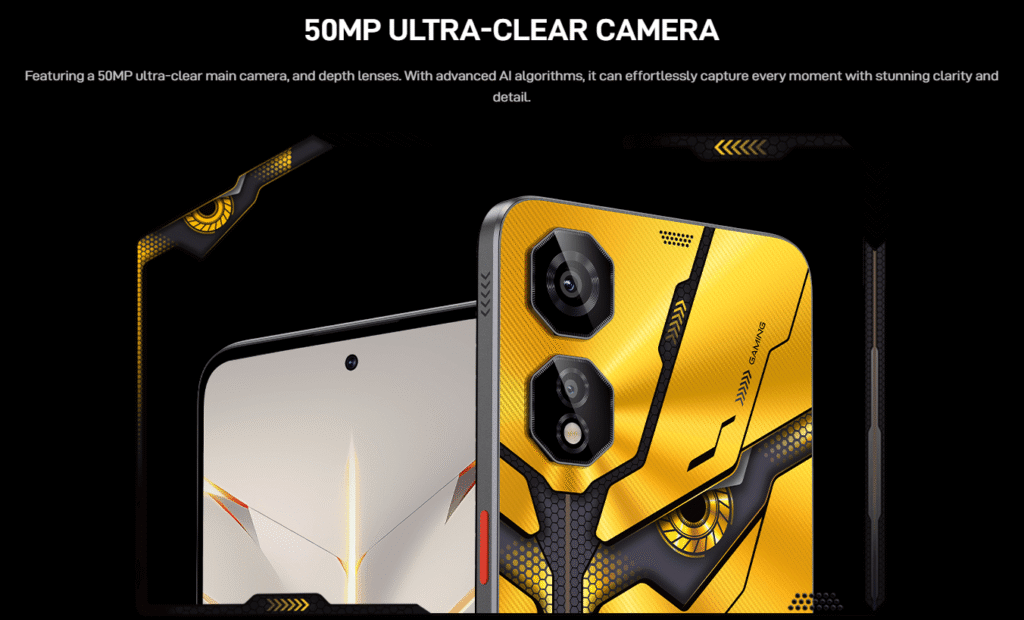
A deep dive into its specifications reveals a series of smart, gamer-focused choices. The phone is built around a large 6.72-inch FHD+ IPS LCD display with a fast 120Hz refresh rate. While not a premium AMOLED panel, the high refresh rate is the more critical feature for fluid gaming, and its inclusion at this price is a significant value-add. Powering the device is the 6nm Unisoc T820 octa-core chipset, paired with a generous configuration of 8GB of RAM and 256GB of fast UFS 3.1 storage—a storage standard typically found in more expensive phones. The camera system is competent, with a 50MP main sensor, and the connectivity is modern, with full 5G support. Perhaps most impressively, the phone houses a massive 6000mAh battery, supported by 33W fast charging, ensuring it can handle long gaming sessions without issue.

In terms of real-world gaming performance, the Neo 2 5G delivers admirably. While it won’t run the most graphically demanding titles like Genshin Impact at their absolute highest settings, it handles them smoothly at lower-to-medium settings. For the vast majority of popular, competitive mobile games like
Mobile Legends or Call of Duty: Mobile, the experience is smooth and responsive, with no significant lag. Quantitative benchmarks support this, with 3DMark Wild Life scores around 2006, placing it firmly in the capable mid-range performance bracket.
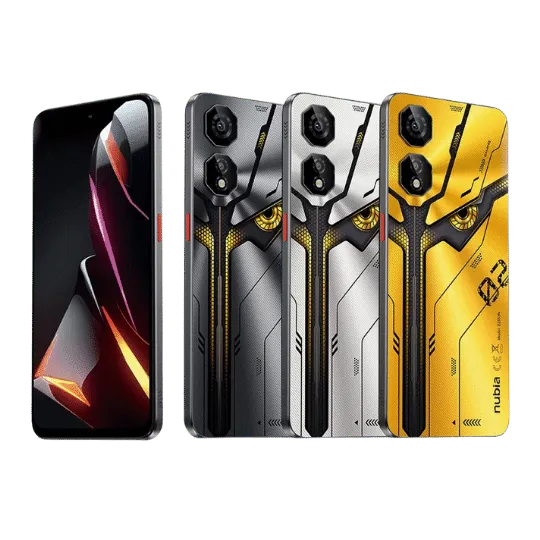
When you combine this competent performance with the cascaded premium features—the pressure-sensitive shoulder triggers, the customizable Game Space 2.0 software, and the striking Bionic Mecha design—the value proposition becomes undeniable. For a price of around Php9,999 in the Philippines (well under $200 USD), the Nubia Neo 2 5G offers a package of gaming-centric features that is simply unmatched in the budget segment. It is, for all intents and purposes, a “banger for the price.”
The existence and success of the Nubia Neo series can be seen as the ultimate product of the lessons ZTE was forced to learn from the U.S. sanctions. It is a device born from a strategy of deliberate supply chain diversification, a sharp focus on an underserved market niche, and the intelligent leveraging of existing software IP to create a disruptive and highly desirable product. The sanctions of 2018 exposed the immense danger of relying on a single, geopolitically sensitive supplier like Qualcomm. The Neo series’ consistent use of Unisoc chipsets is a direct and successful move to mitigate this risk and reduce dependence on U.S. technology. This choice of component also dramatically lowers the bill of materials, enabling the aggressive sub-$250 pricing strategy. To make this affordable hardware platform appealing to its target audience, ZTE and Nubia brilliantly cascade the software and design DNA from the premium Red Magic brand. This act of technology transfer creates a product with a clear “gaming” identity and a perceived value far exceeding its price tag, allowing it to stand out in a sea of generic budget phones. The Neo series, therefore, is not just a cheap phone; it is a masterstroke of ZTE’s modern mobile strategy—a product that simultaneously mitigates geopolitical risk, attacks an undefended market segment, and maximizes the return on internal R&D investment.
Chapter 5: The Complete Arsenal – ZTE’s Multi-Faceted Market Strategy
The specialized successes of Nubia and Red Magic do not exist in a vacuum. They are integral components of a much larger, more comprehensive market strategy orchestrated by the parent company, ZTE. By fielding a diverse portfolio of distinct brands and product lines, each with a clear purpose and target audience, ZTE has assembled a complete arsenal capable of competing across the entire spectrum of the smartphone market, from the entry-level volume driver to the premium flagship challenger.
The Flagship Challenger: The ZTE Axon Series

The ZTE Axon series represents the company’s most direct attempt to compete in the premium, mainstream smartphone market against giants like Samsung and Apple. The core strategy of the Axon line has consistently been to offer high-end, flagship-level specifications at a more competitive price point, targeting the value-conscious consumer who desires premium features without the premium cost.
From its inception, the Axon series has been packed with top-tier hardware, including high-resolution Quad HD displays, the latest Snapdragon processors, premium materials like aerospace-grade aluminum alloys, and advanced audio technology. Models like the Axon 7 were lauded for offering the same build quality and features as competitors from HTC and Samsung but for nearly half the price, making it one of the first unlocked phones to truly break the price-performance barrier.
ZTE has also used the Axon line as a platform for bold innovation in an attempt to differentiate itself in a crowded market. The Axon M, for instance, was a pioneering dual-display foldable smartphone released in 2017, an ambitious effort to introduce a new form factor years before the mainstream adoption of flexible screens. More recently, the Axon 30 Ultra 5G continued the tradition of offering incredible value, packing three 64-megapixel cameras and a Snapdragon 888 processor into a device priced at $750, filling a market gap for affordable flagships that other brands had started to abandon. The Axon series is ZTE’s standard-bearer in the high-end space, a constant challenger pushing the boundaries of what a premium phone can offer for the price.
The Volume Play: The ZTE Blade Series
If the Axon is the challenger, the ZTE Blade series is the undisputed workhorse of the company’s portfolio. This line is ZTE’s primary vehicle for the hyper-competitive budget and entry-level segments, designed to drive high sales volume through an aggressive “affordable premium” strategy. The philosophy behind the Blade series is to offer the latest relevant specs and modern features at extremely accessible price points, making technology available to a wider global audience.

The success of this strategy has been remarkable. By 2014, the Blade series had already become the first smartphone line from a Chinese manufacturer to exceed 20 million units sold worldwide. A key factor in this success has been ZTE’s deep-rooted expertise in fostering strategic partnerships with mobile carriers across the globe. By collaborating with operators like Orange in the UK (where the ZTE Blade was rebranded as the bestselling “Orange San Francisco”) and Wind in Greece, ZTE was able to leverage carrier distribution channels to achieve massive market penetration. Recent models like the Blade A75 5G and Blade V70 continue this legacy, offering features like 5G connectivity and 108MP cameras in the budget segment, ensuring the Blade series remains a powerful engine for driving volume sales and maintaining market share.
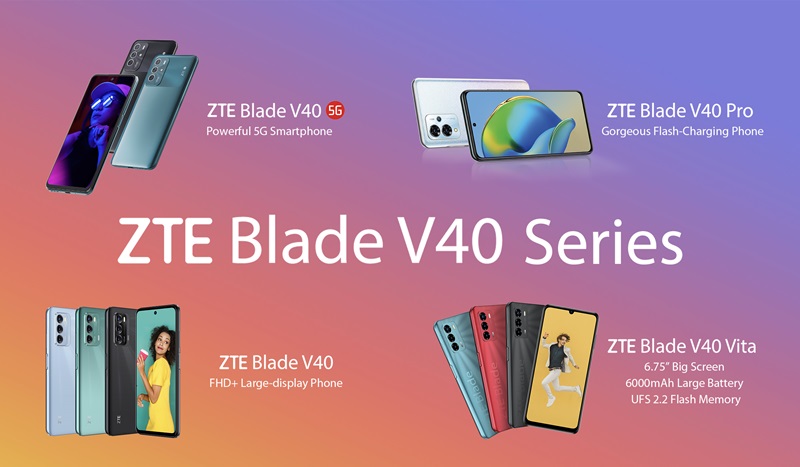
A Brand for Every User: Synthesizing the Grand Strategy
When viewed as a whole, the distinct brands and series within the ZTE and Nubia ecosystem coalesce into a remarkably coherent and comprehensive grand strategy. It is a portfolio designed with surgical precision to cover nearly every conceivable market segment, ensuring that there is a ZTE-made device for virtually every type of user and every price point. This multi-faceted approach allows the company to compete effectively on multiple fronts simultaneously.
The portfolio can be broken down as follows:
- Red Magic: The undisputed halo brand for the elite, hardcore gamer who demands the absolute pinnacle of performance and cooling technology, and for whom price is a secondary consideration to frame rates.
- Nubia Z Series: The niche flagship for the photography prosumer and creative enthusiast, offering unique optical hardware and professional-level controls that appeal to users who see their phone as a primary artistic tool.
- Nubia Neo Series: The disruptive contender in the budget gaming space, targeting younger gamers and emerging markets with a compelling package of gamer aesthetics and features at an unbeatable price.
- ZTE Axon Series: The value-driven challenger in the premium mainstream market, designed to attract savvy consumers who want a flagship experience without paying the flagship price of an Apple or Samsung device.
- ZTE Blade Series: The high-volume workhorse for the global entry-level market, leveraging carrier partnerships and an affordable premium model to drive market share and accessibility.
This intricate structure is a classic example of a “flanking” marketing strategy. Acknowledging the immense difficulty and cost of launching a direct, head-on assault against the fortified positions of Apple and Samsung in the premium mainstream market, ZTE instead uses its specialized sub-brands to execute a series of flanking maneuvers. It attacks undefended or weakly defended niche markets where the dominant players are either absent or have less-focused products. In the high-performance gaming niche, Red Magic can establish itself as the “big fish” without having to directly compete with the iPhone’s ecosystem appeal. In the pro-photography niche, the Nubia Z series can cater to enthusiasts with features that mainstream flagships overlook. In the budget gaming niche, the Nubia Neo series faces almost no direct competition from major brands.
Success in these flanking niches is mutually reinforcing. It generates significant revenue, builds strong brand equity among influential enthusiast communities, and allows for focused R&D (like the Game Space software) that can later be cascaded down to other product lines. This strengthens the company as a whole, providing the financial and technological foundation to sustain its broader efforts with the Axon and Blade series. ZTE’s grand strategy is not about winning a single, decisive battle; it is about winning the war on multiple, smaller fronts through the art of specialization.
| Brand/Series | Target User | Key Selling Proposition | Price Segment |
| Red Magic | Elite/Hardcore Mobile Gamers | Uncompromising Performance & Active Cooling | Premium Gaming ($600 – $1000+) |
| Nubia Z Series | Photography Prosumers & Creatives | Professional-grade Camera Hardware & Optics | Premium Niche ($600 – $900) |
| Nubia Neo Series | Budget-Conscious Gamers | Gaming Features & Aesthetics at a Low Price | Budget Gaming ($150 – $250) |
| ZTE Axon Series | Value-Driven Flagship Buyers | Premium Specs at a Competitive Price | Premium Mainstream ($400 – $800) |
| ZTE Blade Series | Entry-Level & First-Time Buyers | High Volume, Affordability, Carrier Partnerships | Entry-Level / Budget (<$300) |
Export to Sheets
Table 4: ZTE/Nubia Brand Portfolio Overview
Conclusion: The Future of ZTE in a Hyper-Competitive World
The journey of ZTE’s mobile division is a remarkable saga of ambition, crisis, and strategic rebirth. From its origins as a titan of telecommunications infrastructure to its current incarnation as a resilient and tactically astute player in the consumer smartphone market, the company has demonstrated an extraordinary capacity for adaptation. The crucible of U.S. sanctions, a challenge that could have spelled the end for its consumer business, instead acted as a powerful catalyst, forcing a fundamental strategic pivot. The result is the sophisticated multi-brand portfolio we see today—a masterclass in the flanking strategy of niche domination, where specialized brands like Red Magic and Nubia conquer specific market segments, insulating the company from the brutal, head-on competition of the mainstream market.
Looking forward, ZTE is not resting on this strategy but is actively building its next chapter. The company’s stated future direction is centered on two key initiatives: an “All in AI” strategy and the development of a “1+2+N” smart ecosystem. The “All in AI” initiative represents a company-wide commitment to integrating artificial intelligence across its entire product portfolio, from the core network infrastructure that powers 5G-Advanced and 6G to the consumer-facing terminals in users’ hands. For smartphones, this translates to more intelligent on-device applications, AI-enhanced camera systems, and smarter resource management, as seen in the latest Nubia and Red Magic devices.
This AI focus is the engine for the “1+2+N” smart lifestyle concept, ZTE’s vision for a fully integrated and intelligent user experience. In this framework, the smartphone (“1”) serves as the central hub connecting a suite of personal and home data terminals (“2”), such as tablets, cloud PCs, and smart home hubs, which in turn manage a wide array of connected peripherals (“N”), including wearables and other IoT devices. This strategy indicates a clear ambition to move beyond selling individual devices and toward creating a cohesive, interconnected ecosystem that embeds ZTE’s technology more deeply into the daily lives of its users.
In the current 2024-2025 global market, ZTE’s position is nuanced. While it does not rank among the top-five global vendors in terms of overall shipment volume—a space fiercely contested by giants like Apple, Samsung, and Xiaomi—this metric alone does not tell the whole story. The company’s financial reports paint a picture of robust health and strategic success. In the first half of 2025, ZTE’s consumer business reported a strong year-on-year revenue growth of 7.6%, with international smartphone revenue growing by over 30%. This demonstrates that its strategy of focusing on key regions like Southeast Asia, Latin America, and Europe with its dual-brand “ZTE + Nubia” approach is yielding significant results. The company is not winning the war for sheer volume, but it is proving to be highly effective and profitable in the battles it chooses to fight.
Ultimately, the story of ZTE’s mobile division is a powerful lesson in corporate resilience. It is a testament to the idea that in a hyper-competitive global market, direct confrontation with entrenched leaders is not the only path to success. By embracing specialization, diversifying against risk, and relentlessly innovating within targeted niches, ZTE has forged a sustainable and formidable path forward. Its journey from a telecom giant to a multi-branded pocket powerhouse is a compelling case study in how to not only survive a crisis but to emerge from it stronger, smarter, and more strategically focused than before.Sources used in the report
ZTE WEBPAGE ;